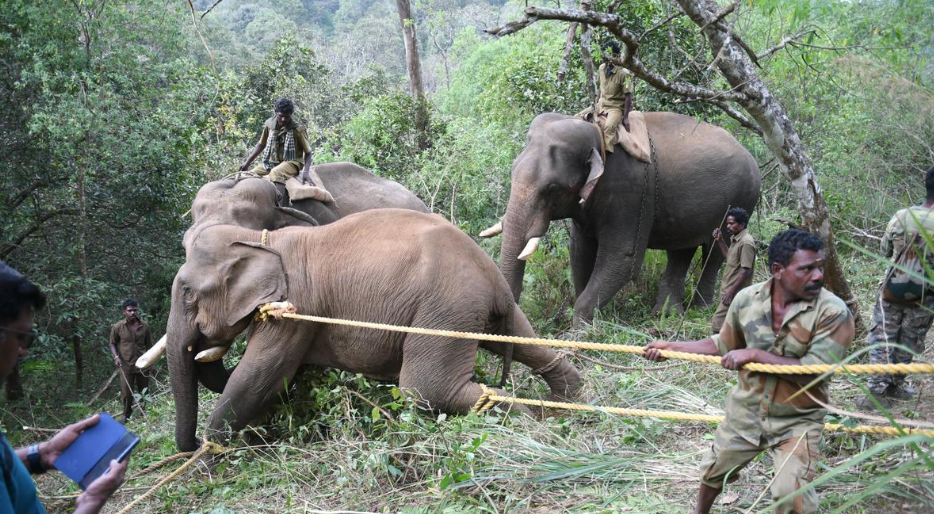The blurry lines between wildlife ‘capture’ and ‘rescue’ (GS Paper 3, Environment)

Introduction
- Rescue is defined as an act of saving or being saved from danger or difficulty.
- On a fundamental level, when it comes to wildlife, the term ‘rescue’ conjures up a sense of hope for the survival of the animal, the drama of the operation, admiration for the skills of human responders, and an acknowledgment of the struggles of coexistence.
Wildlife capture and rescue
- Here, in India, the escalating frequency of human-wildlife interactions is undeniable.
- Given the inevitability of conflict with wildlife, we should look for better solutions than those which focus solely on reactive capture and relocation, which have frequently proven unsustainable, or, worse, fatal to the animals involved.
- Navigating the blurry lines between what constitutes a true “wildlife rescue” and “capture” can be a nuanced challenge in India.
- The successful capture of animals frequently involved in conflict, such as elephants, snakes, and large carnivores, takes many complex forms, requiring chemical and physical immobilisation, alongside a balanced team of experts, each with their specific roles.
- Common scenarios necessitating actual ‘rescue’ include instances such as leopards trapped in open wells, elephants stranded in irrigation tanks, snakes trapped in homes, or even elephant calves separated from their herds.
- However, the mere presence or sighting of wildlife in areas outside our perceived notion of their ‘habitat’ does not always necessitate a “rescue”.
The rescue of snakes
- The failure to distinguish between capture, removal, and rescue becomes all the more apparent when we look further into how conflict with snakes is managed.
- The frequency of interactions with snakes is higher than with all other wild animals combined.
- Unfortunately, this leads to a greater incidence of poor handling, unnecessary removal from habitats, relocation to unfamiliar terrain, and the use of snakes as props in social media posts, all in the name of ‘rescuing’ them.
- There is plenty of evidence to suggest that relocated snakes have extremely poor survival prospects.
- Just as importantly, relocation does not really resolve conflict. Instead, it creates a vacuum that more than one snake could subsequently occupy, thereby potentially increasing the frequency of conflict.
- These ‘rescue’ operations, irrespective of species, do more harm than good, as they can cause physical trauma, injuries, and undue stress, compromising the animals’ post-release survival chances.
- Overall, the term ‘rescue’ itself carries the implication that one species is under threat from another. Either elephants or snakes are under threat from humans or human development activities, or humans are under threat from the wild animals with whom they share a lived space.
- Attempting a ‘rescue’ in either scenario may villainise one party or another and erode public faith in conservation efforts. ‘Rescue’ as a solution to conflict draws a line in the sand, and pits animals against people. This does not help long-term conservation goals.
- We need to see community more holistically, as comprising and integrating both human beings and non-human animals, instead of driving divisiveness through our wildlife management practices.
Suggestions
- The resolution of potential conflicts that arise between humans and non-human animals in shared environments should begin with a realistic assessment of the situation by identifying the problem, limiting any factors that may stress the animal, making sure other proactive measures have been exhausted, and basing any intervention on the most ethical means — one that considers the welfare of the animals and the people involved.
- Proactive mitigation strategies to avoid conflicts before they occur should always be our first instinct.
- Some promising approaches being tested across India, especially by the Karnataka Forest Department, include early warning systems, regular monitoring, fencing, better lighting, public education, and improved waste management to reduce, or better prepare communities for potential interactions with wildlife.
Conclusion
- Relocation of a wild animal disrupts two ecosystems — the one that the animal is taken from, and the one to which that animal is introduced.
- We should look for an approach that leaves every one of us, human and animal alike, better off.


